Ballet, as an art form, can be difficult to write about. The art of it, the movement from one moment in space to another, is almost impossible to describe in any detail without resorting to jargon that at best conveys a terrible case of Francophilia and at worst renders the whole description unintelligible. Still, every so often you happen across a ballet—whether it’s a performance, a new piece, or just a little video clip of an old prima ballerina—that demands to be shared with whomever will listen. This is a review of Lexington Ballet’s Romeo & Juliet, and it is one of those pieces that demands attention, even secondhand.
Lexington isn’t a large city, and so it’s somewhat remarkable that its Ballet was able to attract the talents of Artistic Director Luis Dominguez who received full scholarships to study in New York with the world acclaimed Dance Theatre of Harlem as well as The Alvin Ailey American Dance Theater. Mr. Dominguez went on to perform around the world as a soloist with the Dance Theatre of Harlem.
For this production of Romeo & Juliet, which sadly ran only for this weekend past, he crafted a new set of choreography to match the music of Sergei Prokofiev. Dominguez’ choreography glitters with life and an enthusiasm that is often missing from an art form over three hundred years old. Dominguez has marshaled his company to flit and float about the stage in deceptively simple group tableaus, and he makes his soloist and principal dancers explode off the stage. At the same time, he keeps the ballet grounded, never letting the dance become so airy that it floats away on a cloud of insubstantial pleasantness.

He achieves this monumentally difficult balancing act by keeping everything about the production simple and direct. Nobody and nothing is carried away by obscure technical details; where Dominguez wants to convey apathy, Mercutio will simply shrug. At the end of Act I, when Romeo and Juliet have finished the first of their spectacular pas de dieux dances, they kiss. Dominguez isn’t interested in communicating with the audience through an opaque and difficult-to-follow series of classical gestures. He just tells the story he wants to tell in a fantastically physical way. And he goes all in to tell it.
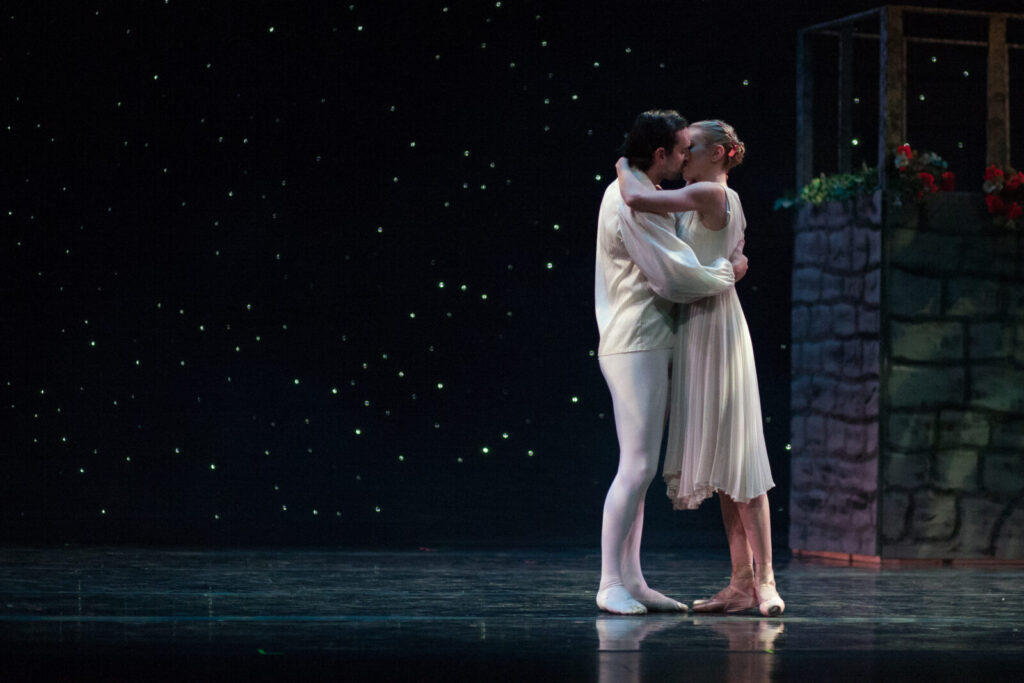
Watching this production, it was remarkable how youthful and enthusiastic the whole affair was. I’m no expert, to be sure, but I’ve seen plenty of ballet, and it’s remarkable how often a production will come across as totally lifeless. The cast of Romeo & Juliet, on the other hand, brought such a raw enthusiasm to the performance I saw that I couldn’t help but get carried away in it all. Everyone on stage was having enormous fun, and it infected the audience.
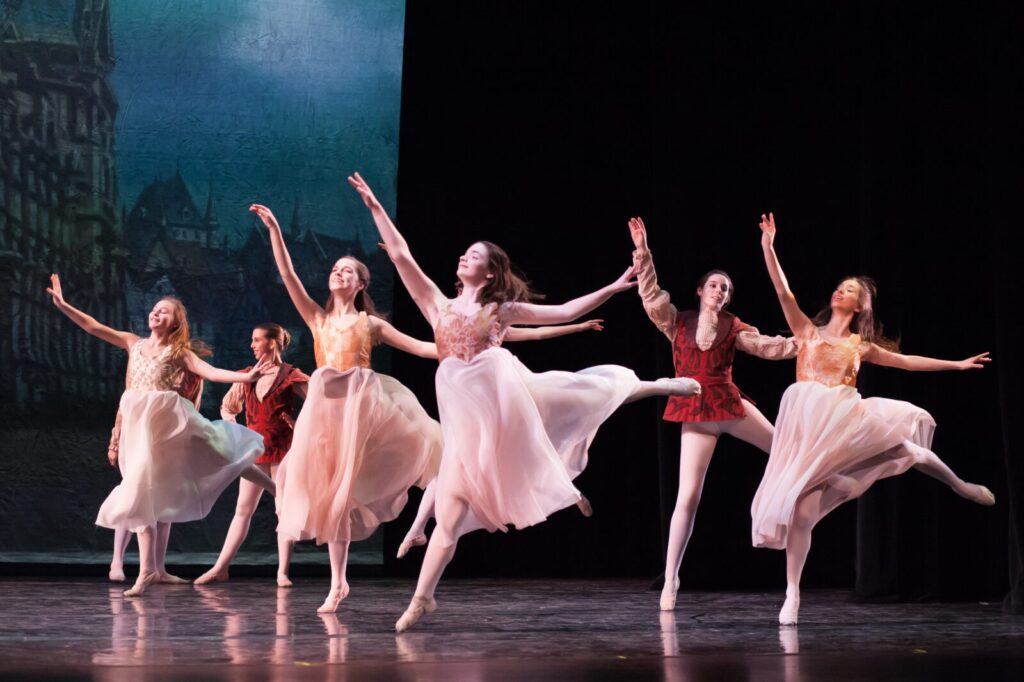
This enthusiasm was aided by Dominguez’ commitment to a simple and direct choreography. When Mercutio and Tybalt duel, Dominguez’ lets them really swing their swords. It isn’t totally un-stylized, of course; a wide swing is still done with a pirouette. But the ‘language’ of this production was geared towards the general public, not experts of academics who are more interested in dissecting the significance of a single arabesque than in whether they understood what was going on on-stage.
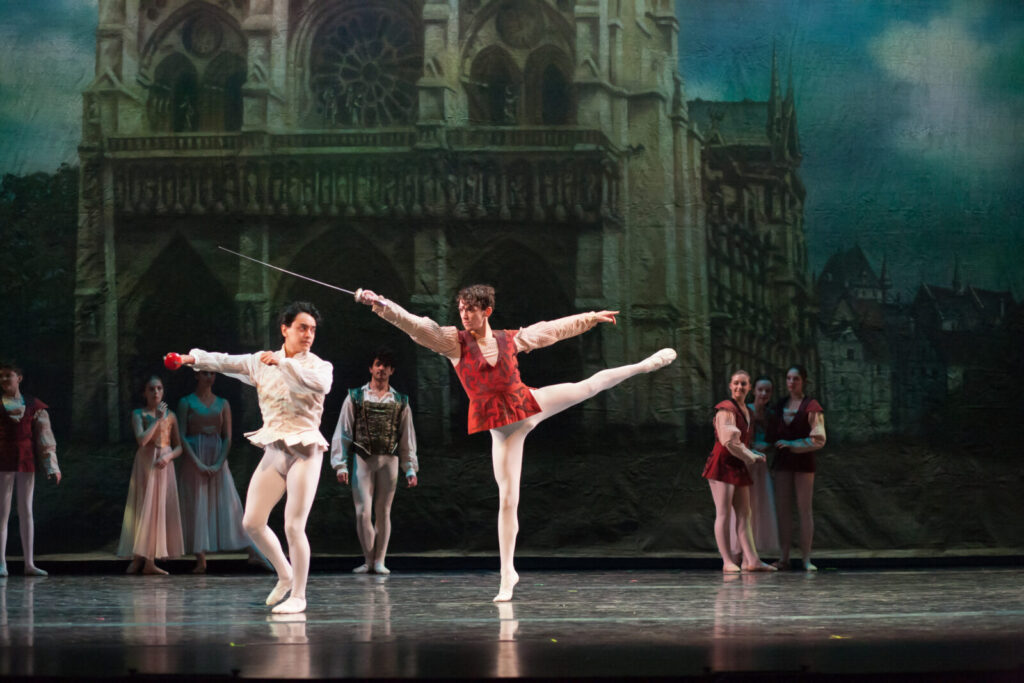
The youthful enthusiasm of this production wasn’t without a downside, though, and Romeo & Juliet certainly wasn’t perfect. There were plenty of minor dancing errors—a dancer’s head would turn the wrong way, or someone would land from a jump out of time with the rest of the company—but again, that irrepressible energy made it irrelevant to the experience. I just couldn’t find it in myself to be bothered by a lack of technical perfection on the part of the dancers.
Similarly, there were questionable production choices. The lighting of the stage would often cast shadows over the faces of any dancer who strayed too far from center. Loading up three of the soloists with bells that jangle off-time to the music can be distracting when it doesn’t have to be. Moving a set piece—the inescapably iconic balcony—on and off too slowly can put a drag on the momentum of Act I. All these choices certainly count against the production, at least from my perspective, but again I struggle to be all that bothered by any of them.
Maybe it was their faces. A lot of ballet will simply have the company plaster on dead-eyed and utterly artificial expressions of seriousness, meant to convey that you are watching High Art, and never vary that pose. These dancers, and prima Ali Kish in particular, never went in for that approach. When Juliet is happy, Kish lights up the house with a laugh. And when the body count starts to climb, towards the end of the second act, Lady Capulet, danced by Alex Orenstein, twists and contorts her face in a mixture of sorrow and rage.
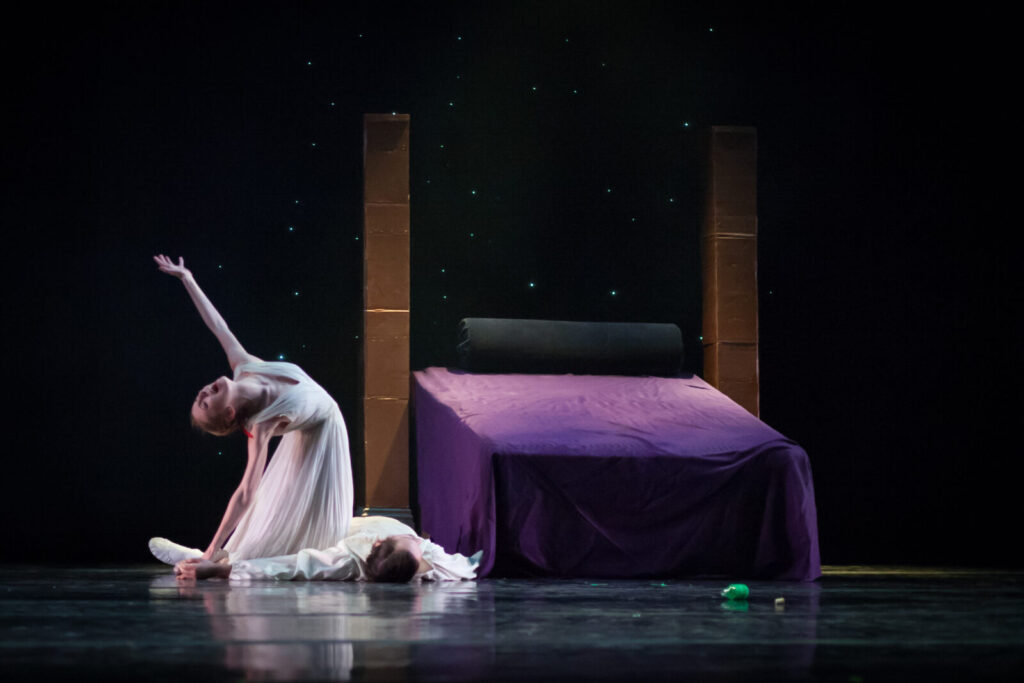
This is part of a remarkable commitment on the part of Dominguez and company to actually define their characters as characters. Dominguez doesn’t just use the story of Romeo and Juliet to move from one dance piece to another, he adds little flourishes and touches to create people out of his dancers. Juliet is girlish and impulsive—we first see her enter carrying a doll, a child’s toy. Mercutio, danced by Frank Macias, is the quintessential rogue—he interrupts his fatal duel with Tybalt to take a moment and flirt with one of the girls watching him fight for his life. Cal Lawton’s Lord Capulet, a man whose life is lived by violence, prowls like a bear and strikes his daughter when she refuses to marry Paris. This is a production more interested in the psychologies of its characters than most.
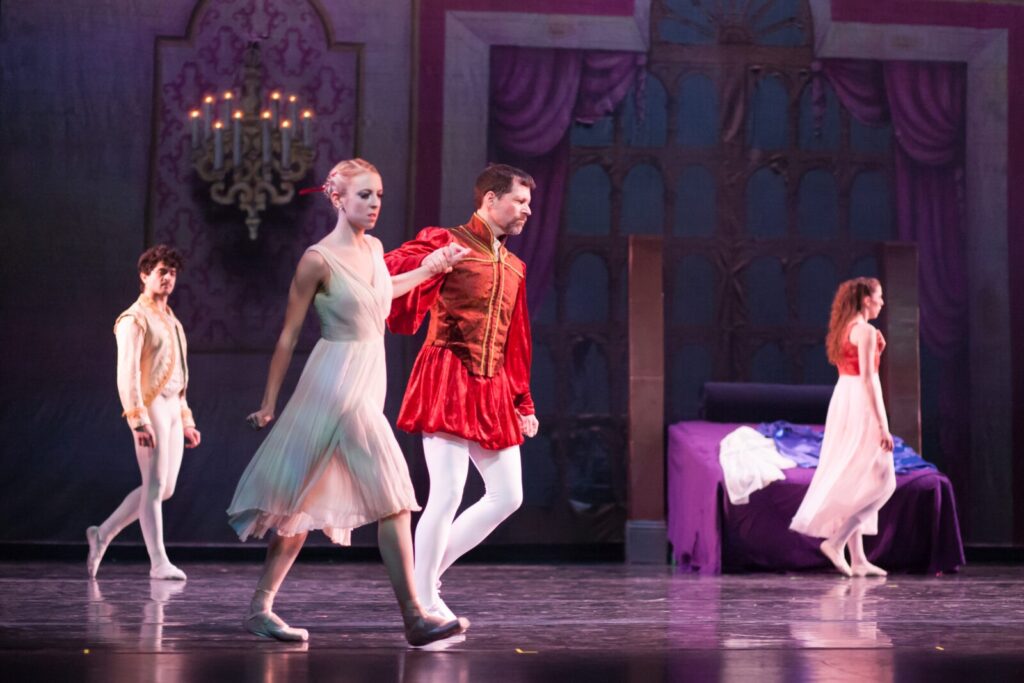
Again, this approach is not carried off without flaws. Romeo himself remains an almost total cipher—what does he see in Juliet? (But to be exceedingly fair, this is also a criticism that can be leveled at Shakespeare’s play.) The secondary characters—The Friar, the Nurse, Tybalt—also remain more-or-less sketches of characters. The dancers, however, give them a life beyond the choreography. Paris, another cipher, gains definition through Tyveze Littlejohn’s rigid and military posture that he maintains even at Juliet’s graveside.
This character-driven approach reaches its peak in Act III. Juliet, utterly distraught by the death of her cousin and the exile of her Romeo, dances a pair of solos in a style entirely different from everything done in the first two acts. Where before she was light and graceful in the pas de dieux, here her motions become quick and sharp, the poses she strikes angular and rigidly defined, not soft or flowing. Kish’s movements become anguished and aggressive, blurring the line between dance and passionate pantomime. The choreography became totally subservient to the character, and it made both reach new highs. It was the best performance I’d seen from a dancer in a long time.
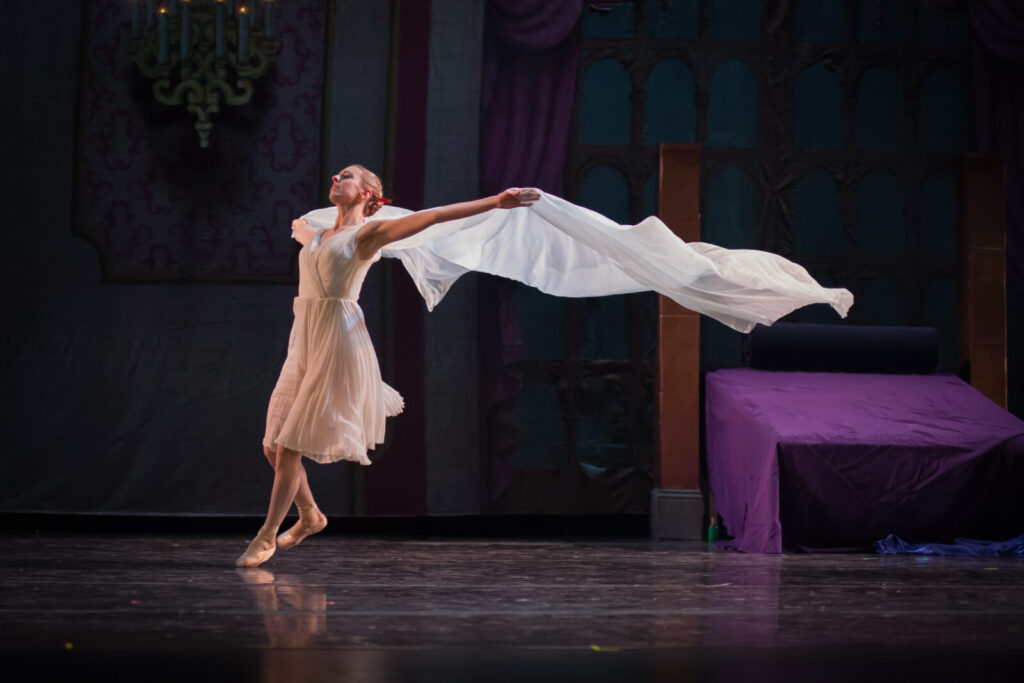
When I walked out of the Lexington Opera House, I remember thinking how unusual it was to realize that I’d had fun at the ballet. Often, a ballet performance will leave me appreciative of the skill required, and the aesthetics of the performance; when I walk out of the theater I sometimes feel like I sat through a particularly boring church service. It’s a rare performance where I leave the theater with a smile on my face. Romeo & Juliet left me with a stupid grin.
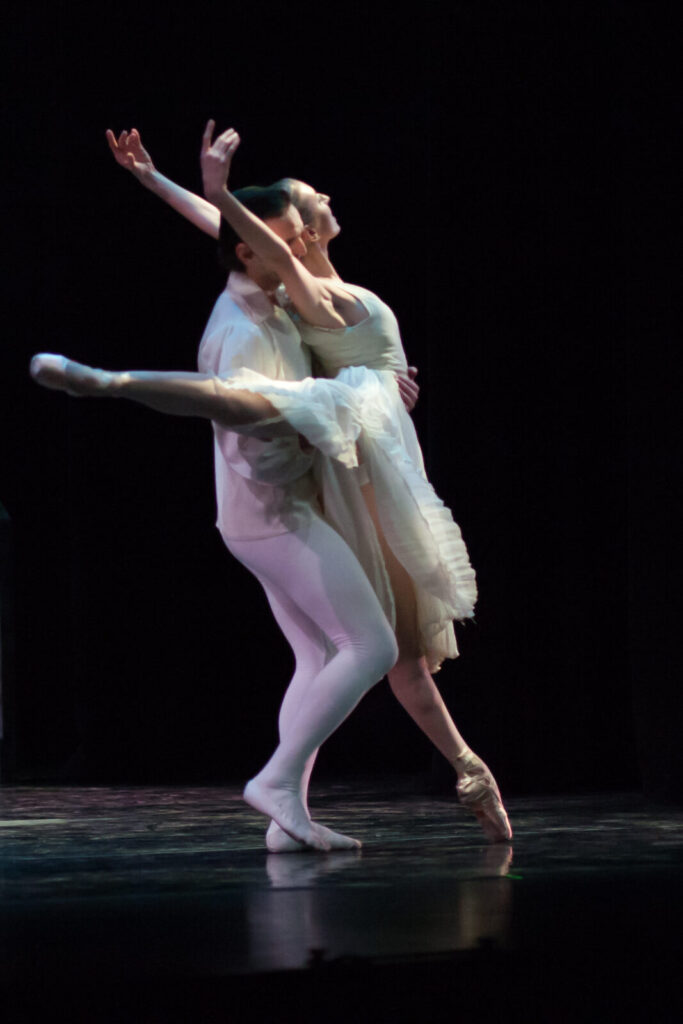
(Topmost image courtesy of Nicole Brocato Photography)




